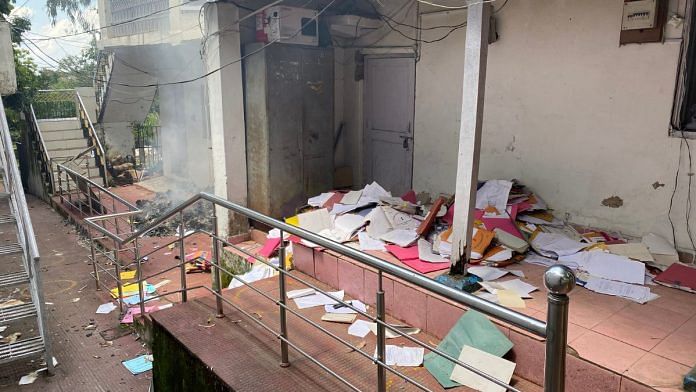Eight years after the historic Battle of Plassey between Nawab Siraj ul-Daula of Bengal and Lord Clive of the East India Company, the first of India’s sixty-two cantonments was established in Barrackpore, near Calcutta, in 1765. However, according to a notification issued on 2 May 2023, these “archaic colonial institutions” are now set to be abolished. The core military areas will transition into military stations, while the civilian areas will merge with the adjoining municipalities. While retired top brass of the army may feel a sense of loss, the overall response to this move has been positive.
Yol in Himachal became the first cantonment to be abolished, with Secunderabad, the second largest cantonment in the country, set to follow suit. Established in 1798 after an alliance between Nizam Sikander Jah and the EIC, Secunderabad holds a significant position. However, it is Kanpur (formerly Cawnpore) cantonment, established in 1811, that claims the top spot as the largest cantonment in India. Kanpur played a crucial role in the First War of Independence in 1857, led by Nana Sahib and Tatya Tope. A decade earlier, in 1801, Nawab Sadat Ali Khan was forced to cede half of his territories and accommodate a detachment of 10,000 British troops on the outskirts of Lucknow under the guise of ensuring his safety.
There is a remarkable parallel between the British conquest of India and the establishment of cantonments across the country. For instance, after the Anglo-Sikh wars, Jalandhar cantonment was established in 1848, primarily in the lands adjacent to the Ahluwalia Misl, which controlled the state of Kapurthala. Originally meant to quell disturbances from neighbouring states and maintain peace, it later became an important recruitment and training centre. In 1920, it was the site of a mutiny by the Irish Regiment stationed there, protesting martial law in Ireland by replacing the Union Flag with the flag of the Irish Republic.
Institutional arrangements for cantonments
From 1864, the administration of cantonments was streamlined and placed under the charge of a magistrate. In 1880, the cantonment authorities gained legal status and were empowered to impose taxes. The Cantonments Act was promulgated in 1924, followed by the establishment of the Military Lands and Cantonments Service in the 1940s, which later evolved into the Indian Defence Estates Service.
Lal Kurti: Red-Light Areas
Another aspect of the cantonment history relates to the establishment of red-light areas known as “Lal Kurtis” to cater to the needs of British soldiers who found it difficult to travel home for extended periods. These demarcated areas within the cantonments housed sex workers, whose quarters were maintained by the cantonment authorities. The intention was to keep the soldiers away from civilian areas. While these women primarily served British soldiers, trusted Indians like the “unit Bania” could also be granted permission at the discretion of local commanding officers. Many Regimental Centres set up funds to support retired and infirm sex workers who remained in the cantonments long after their active service, as they had nowhere else to go.
Also read: Converting cantonments like Yol can reap benefits – only if govt is transparent in its dealings
The new dispensation
Under the new dispensation, a clear demarcation will be established between military stations and civilian areas. This move is expected to release up to 1.61 lakh hectares of land worth thousands of crores, stimulate economic activity, provide welfare to economically weaker sections residing in cantonments, and enhance the security of core military areas with only the necessary civilian population to support defence forces’ activities. The Army is already in the process of defining its core and non-core activities, leading to the abolition or downsizing of various directorates such as Military Farms.
The Fallout in Pakistan
The impact of these changes has extended beyond India’s borders, with significant media coverage in Pakistan. Pakistan currently has 44 cantonments, up from 23 at the time of Independence, and the control of the army is even more entrenched than in India. Pakistani newspapers such as Dawn, The Friday Times, The Nation, The Express Tribune, and Daily Pakistan prominently featured this news, quoting reports and editorials from India. Pakistani social media also witnessed a campaign to end the “archaic colonial institution” within their own country.
Shafqat Shah Sb, Are there Pakistani style “Cantonments” in the US & UK? Like Lahore Cantt, Karachi Cantt, Peshawar Cantt, and dozens of city size cantonments all across Pakistan where large populations and business exist? In USA, there are “bases” which are specific to the needs… https://t.co/stlRE26MG6
— Moeed Pirzada (@MoeedNj) May 4, 2023
Observers argue that cantonments in Pakistan, with their sprawling real estate projects and business complexes, are out of sync with the times. They see these cantonments as remnants of a bygone era when white colonists and imperial officers sought safety and comfort apart from the local population. Such sentiments highlight how developments in India have influenced perceptions and discussions about cantonments in the neighbouring country as well.
While the situation in India differs from Pakistan due to the strength of democratic institutions, it is undeniable that a terminal deadline for the abolition of cantonments was necessary. Now that it has arrived, it is essential to optimise the use of these lands, which have witnessed some of the most significant events over the past two and a half centuries.
Disclosure: The author spent his formative years in the Jullundur (Jalandhar) cantonment, and has a nostalgic feel about the Mall Road, Bhim Road, the Cantt Club, and the Regal cinema – but acknowledges that change is the order of the day!
Sanjeev Chopra is a former IAS officer and Festival Director of Valley of Words. Until recently, he was Director, Lal Bahadur Shastri National Academy of Administration. He tweets @ChopraSanjeev. Views are personal.
(Edited by Prashant)






